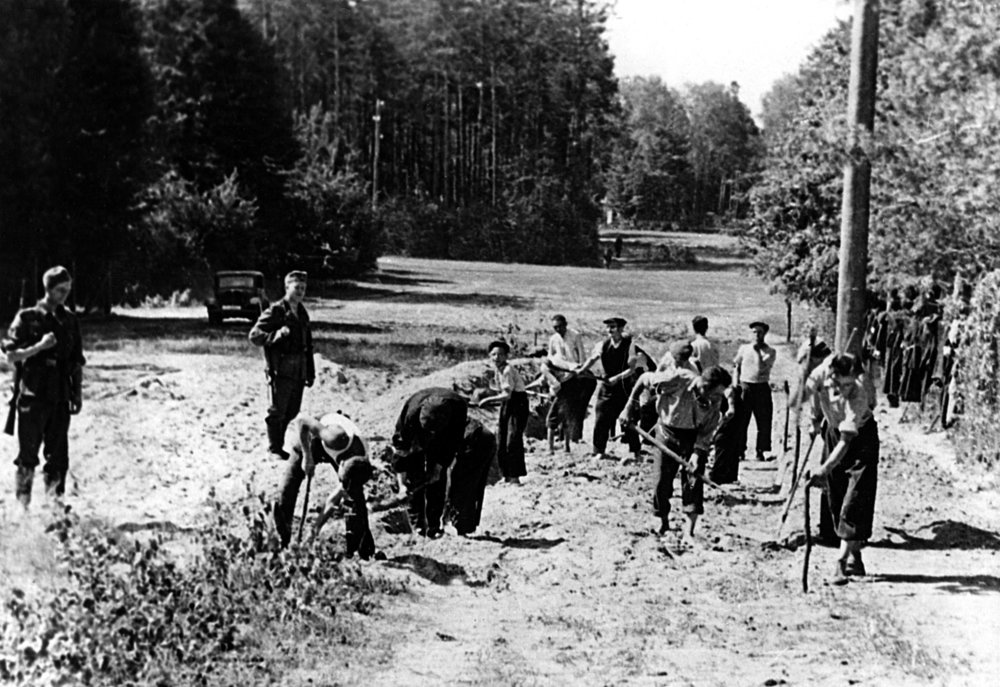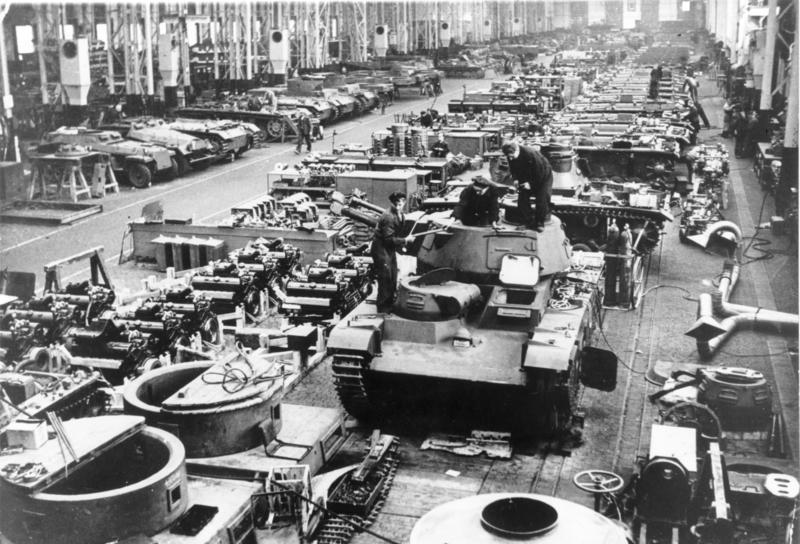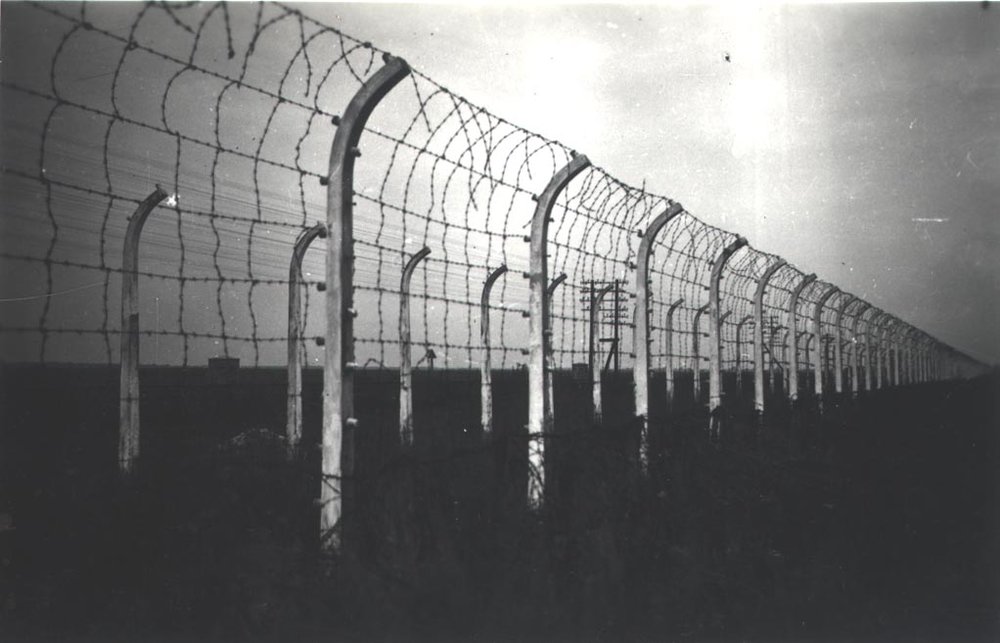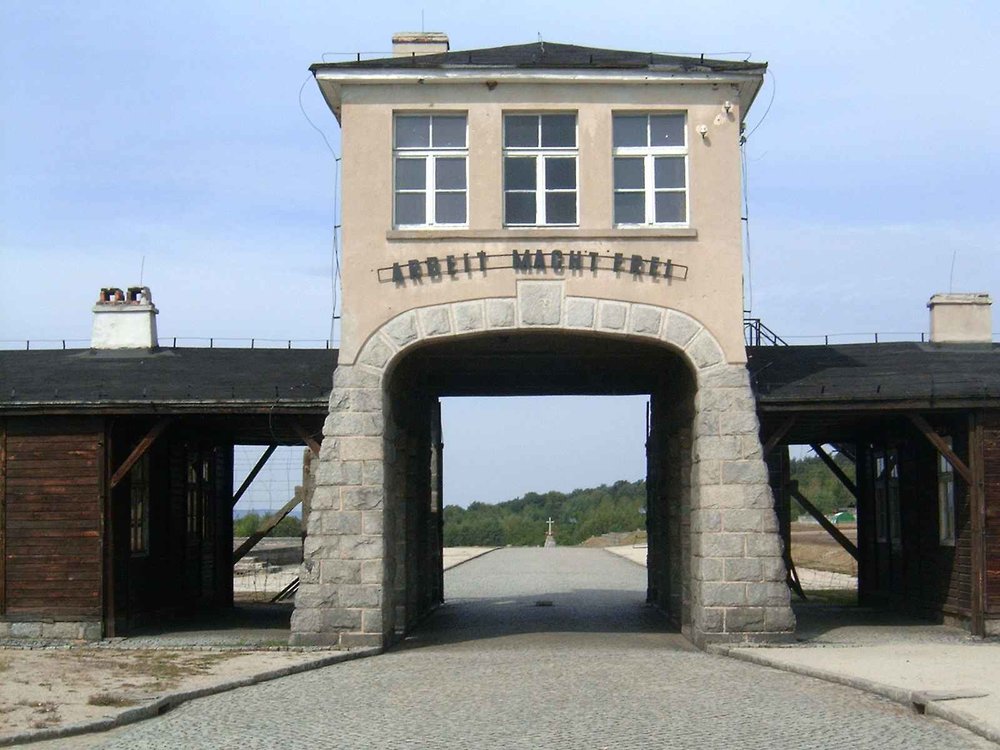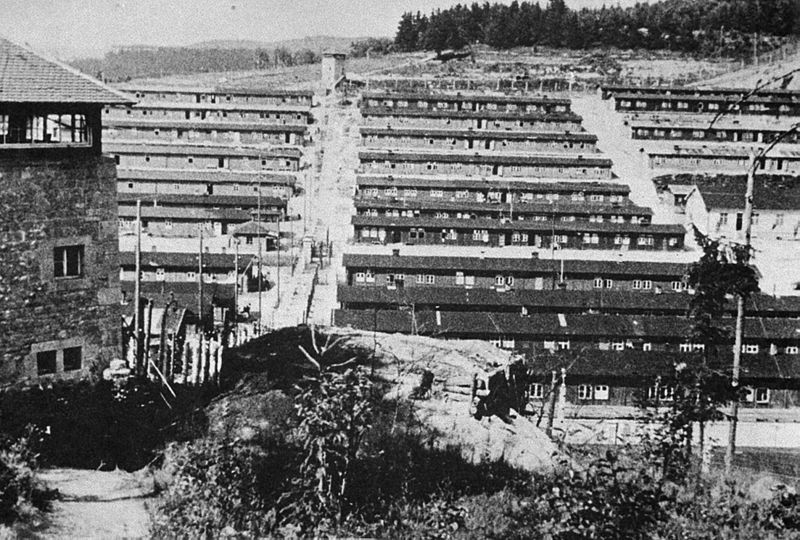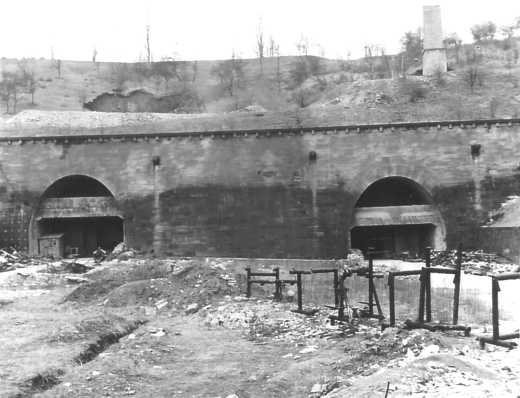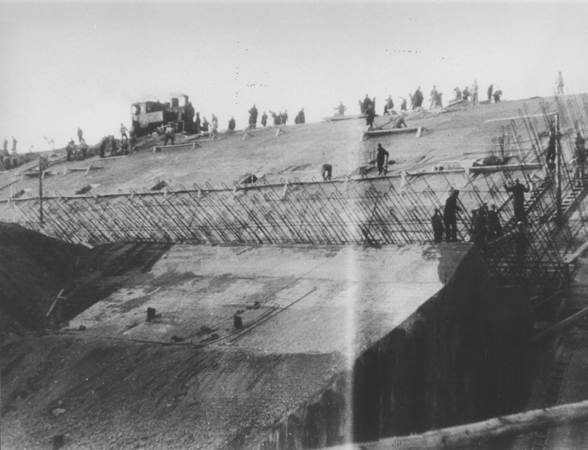Leonberg was chosen as the site for a large subcamp of the Natzweiler concentration camp because an airplane parts manufacturing plant (Presswerke) for the firm Augsburg Messerschmitt AG was located there.
The workshops were built in the Etlingen area. Next to Leonberg ran a section of the Munich- Heilbronn highway, and a double tunnel had been dug before the war. At the end of 1943, the ends of the tunnel were blocked and the factory was relocated there. Production began at the end of spring 1944. All that was needed was a labour supply. A Natzweiler subcamp (Aussenlager) was created for that purpose, just a few hundred meters from the tunnel’s entrance.
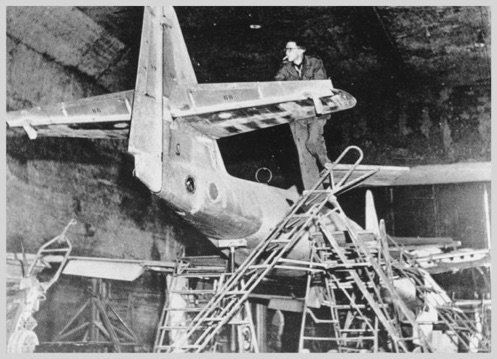
Construction in the road tunnel of the fighter aircraft ME 262 [Overijssel Historical Center]
On June 1, 1944, there were 650 men in the camp; on July 1, 852; July 9, 798; July 12, 1,032; September 30, 1,162; October 31, 1,555. The number of inmates rapidly increased until reaching around 3,000. The largest number of convoys came from Dachau or its subcamps.
The inmates arrived at the train station in Leonberg, and then they had to walk 2 kilometers (1.2 miles) to the camp. They came from all over Europe, the most widely represented nationalities were Polish, Hungarian, French, Russian, and Yugoslav. The categories of inmates present in the camp were also diverse. While the majority were registered as “protective custody” (Schutzhaft) prisoners, there were Jews, political prisoners, Gypsies, “asocials,” and prisoners of war (POWs). The first Jewish prisoners did not arrive until November 1944. There were in total 659 Jews registered in Leonberg.
The camp was made up of five wooden barracks on concrete foundations; one served as an infirmary (Revier). The other buildings each included four sections into which prisoners were crowded. The camp, surrounded by electrified barbed- wire fences, was guarded from about four or six towers. The roll-call yard was small. The surveillance of the camp was in the hands of the SS.
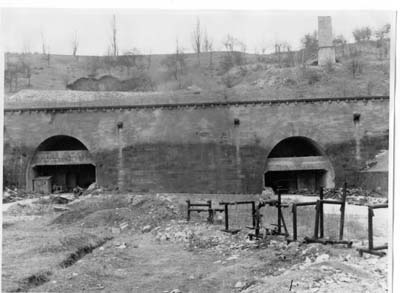
Leonberg 1944-54 [Memorial Museum Leonberg]
The vast majority of camp prisoners worked in the tunnel, manufacturing airplane parts, in particular, wings for Messerschmitt (Me) 262 series aircraft. The majority of the factory’s workers were inmates, but there were also German foremen and foreign forced laborers.
In mid- April 1945, facing the advance of Allied troops, the inmates were evacuated on foot to Stuttgart. The inmates received 200 grams (7 ounces) of bread for the journey. Many among them were beaten during the death march, for example, at Mitterskirchen. At the train station in Stuttgart, they were loaded into freight cars, as many as 100 per car. Some inmates died in the cars. Fights broke out. There was no food distribution. After three days of travel, the train arrived at the Kaufering station, close to Landsberg, about 60 kilometers (37.3 miles) from Munich, where there was a Dachau subcamp. According to the testimony of one of the inmates, Ernst Bornstein, one- fourth of the men died on the train. The majority of the inmates, 1,989, remained in this subcamp; a smaller contingent of 724 men was transported to the Mühldorf subcamp, which was also under the control of Dachau.
Before the arrival of the Allied armies, the barracks of the Leonberg camp were burned down.
Full entry: https://www.ushmm.org/online/camps-ghettos-download/EncyclopediaVol-I_PartB.pdf
SOURCES Documentation pertaining to the Leonberg subcamp can be found at ITS (Hängemappe Akdo Leonberg; Zuwachsordner KL Natzweiler); the VVN, Stuttgart (Ordner Leonberg); BA- L (AZ IV 419 AR- Z 171/69). Among the few secondary sources on the camp are Jürgen Klingel, “Zur Funktion und Entwicklung der Konzentrationslager. Das Lager Leonberg,” in Nationalsozialistische Konzentrationslager im Dienst der totalen Kriegsführung. Sieben württembergische Aussenkommandos des Konzentrationslagers Natzweiler/Elsass, ed. Herwart Vorländer (Stuttgart: W. Kohlhammer Verlag, 1978), pp. 19–69; Friedrick E. Wolf, ed., KZ in Leonberg. Eine Dokumentation (Leonberg: Haus der Begegnung Erwachsenenarbeit der Evang. Kirchenbezirke Leonberg/Ditzingen, 1980). A former Jewish inmate of Leonberg wrote a memoir: Ernst Israel Bornstein, Die lange Nacht. Ein Bericht aus sieben Lagern (Frankfurt am Main: Europäische Verlagsanstalt, 1967). Jean- Marc Dreyfus trans. Gina Cooke

